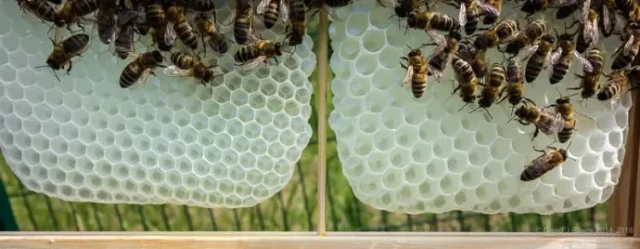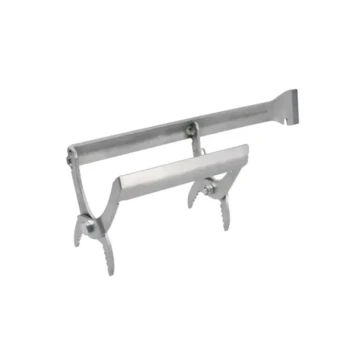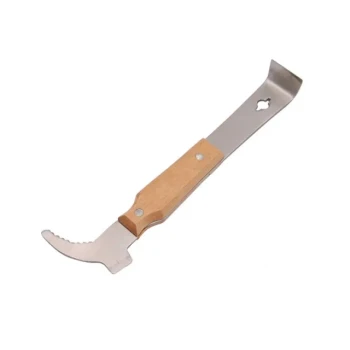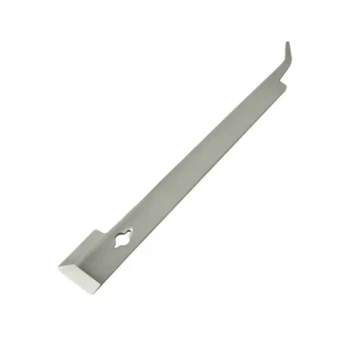Per gli apicoltori che adottano l'apicoltura senza foglio cereo, la costruzione di favi incrociati è una sfida comune ma prevenibile. Questa guida fornisce strategie attuabili per incoraggiare la costruzione di favi dritti, correggere in sicurezza i favi disallineati e mantenere la salute a lungo termine dell'alveare, utilizzando metodi supportati dalle migliori pratiche apistiche.
Basi della costruzione di favi senza foglio cereo
Le arnie senza foglio cereo imitano i comportamenti naturali di costruzione dei favi, ma senza una gestione adeguata, le api possono creare strutture di cera caotiche. Ecco cosa ogni apicoltore dovrebbe sapere:
Perché si verificano i favi incrociati e perché è importante
Le api costruiscono i favi in modo erratico quando:
- La spaziatura dell'arnia è incoerente: telaini troppo distanti incoraggiano il "ponti" tra di essi.
- L'arnia non è in piano: le api seguono la gravità, costruendo i favi perpendicolarmente al terreno.
- Non esiste un favo guida: le api si basano sulla cera esistente come modello.
I favi incrociati complicano le ispezioni, la raccolta del miele e le divisioni dell'alveare. Se non controllati, possono indebolire la resilienza della colonia.
Progettazione dei telaini per incoraggiare favi dritti
-
Spaziatura ottimale dei telaini:
- Utilizzare 10 telaini in una cassa da 10 telaini o 8 telaini in una cassa da 8 telaini per mantenere lo "spazio d'ape" (distanze di circa ⅜ di pollice).
- Includere 1-3 telaini con favo costruito come guida per la nuova cera.
-
Strisce di partenza vs. barre superiori a cuneo:
- Le strisce di partenza (legno rivestito di cera/bastoncini del ghiacciolo) sono economiche e indicano dove costruire.
- Le barre superiori a cuneo richiedono misurazioni precise ma riducono i rischi di distacco del favo.
Suggerimento professionale: La ricerca mostra che le colonie con strisce di partenza producono favi più dritti l'80% più velocemente rispetto a quelle senza guida.
Tecniche avanzate di allineamento dei favi
Tempistica delle ispezioni per una manipolazione ottimale della cera
- Ispezionare ogni 5-7 giorni durante il picco di accumulo (primavera/inizio estate). La cera fresca è malleabile e più facile da regolare.
-
Cercare:
- Linee di base storte nel nuovo favo.
- Api che ignorano i bordi del telaino.
Utilizzo dei principi dello spazio d'ape
Le api evitano naturalmente di riempire spazi più piccoli di ¼ di pollice o più grandi di ¾ di pollice. Sfrutta questo fatto:
- Posizionando i telaini distanziati uniformemente prima che le api inizino a costruire.
- Aggiungendo distanziatori temporanei (ad es. chiodi o elastici) per correggere la spaziatura a metà stagione.
Correzione sicura dei favi incrociati
Metodi di riattacco passo-passo
Per gravi costruzioni di favi incrociati:
- Tagliare con attenzione: Usare un coltello caldo per tagliare il favo disallineato dal telaino.
-
Riposizionare: Fissare il favo al telaino corretto con:
- Elastici (più delicati sulla cera).
- Fermagli per capelli (per piccole sezioni).
- Monitorare: Le api riattaccheranno la cera entro pochi giorni. Rimuovere gli aiuti una volta che il favo è stabile.
Attenzione: Evitare fascette stringicavo, possono comprimere le scorte di miele e danneggiare il covata.
Salute a lungo termine dell'alveare dopo la riparazione dei favi
- Nutrire leggermente (sciroppo di zucchero 1:1) per incoraggiare la ricostruzione della cera.
- Ridurre le ispezioni per 2 settimane per ridurre al minimo lo stress.
- Controllare le celle reali, poiché la perturbazione dei favi può innescare lo sciamatura.
Punti chiave
- La prevenzione è meglio della correzione: arnie in piano, uso di strisce di partenza, mantenimento dello spazio d'ape.
- Agire tempestivamente: regolare la cera malleabile entro la prima settimana di costruzione.
- Riparare con attenzione: dare priorità a strumenti di riattacco sicuri per le api come gli elastici.
Migliora il tuo apiario con HONESTBEE
Apicoltori commerciali e distributori si affidano ai telaini durevoli e con spaziatura di precisione e ai kit di partenza di HONESTBEE per ridurre al minimo i rischi di costruzione di favi incrociati. Esplora le nostre forniture apistiche focalizzate sul commercio all'ingrosso, progettate per supportare colonie fiorenti ed efficienti.
Hai notato schemi stagionali nelle abitudini di costruzione dei favi delle tue api? Condividi le tue osservazioni per affinare ulteriormente queste strategie.
Guida Visiva
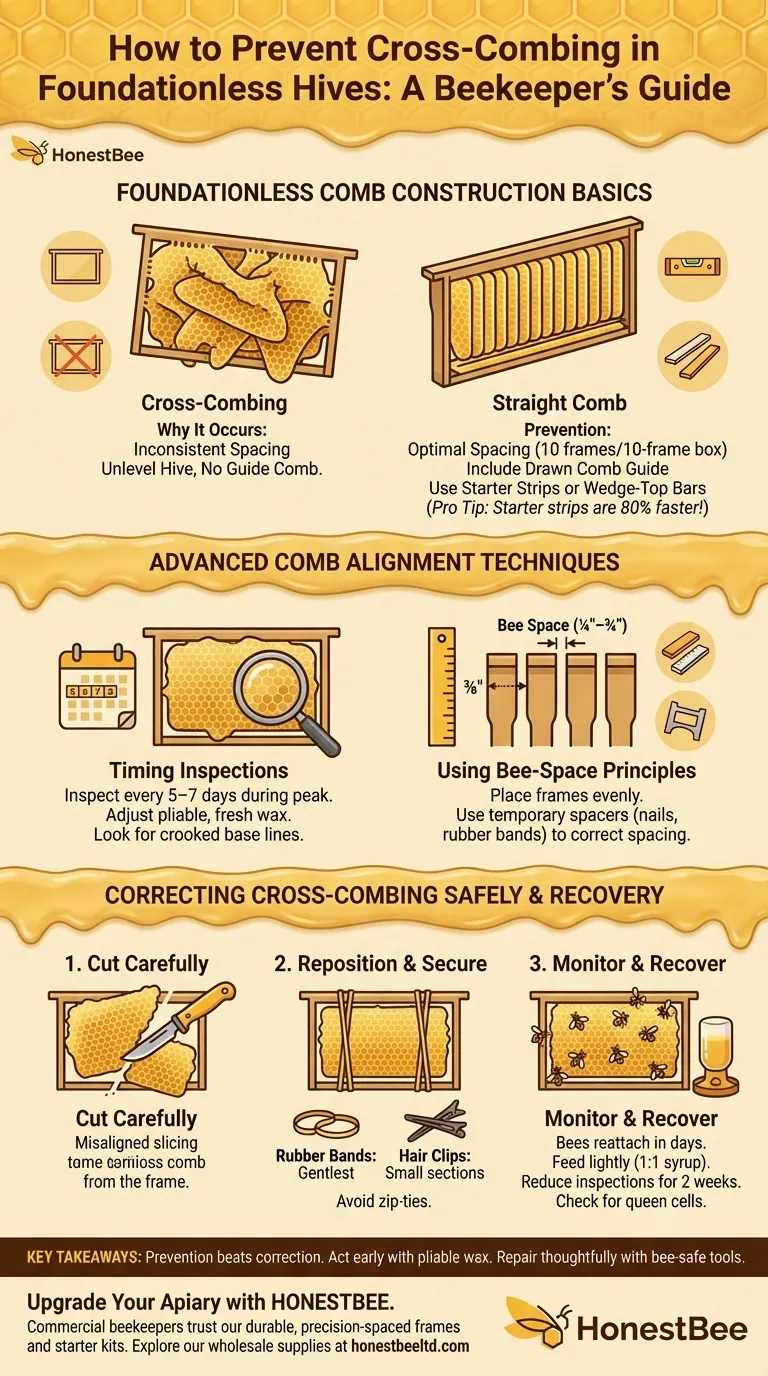
Prodotti correlati
- Alveare a barre orizzontali di tipo Langstroth lungo per la vendita all'ingrosso
- Strumento per alveari multifunzione con impugnatura a pinza
- HONESTBEE Strumento ergonomico avanzato per l'alveare in acciaio inox per l'apicoltura
- Attrezzo professionale in acciaio inox a doppia estremità per l'apicoltura
- HONESTBEE Strumento professionale per alveari a manico lungo con lama di taglio di precisione
Articoli correlati
- L'attrezzatura apistica essenziale per i principianti: Funzioni, selezione e buone pratiche
- Come scegliere tra le arnie Top Bar e Langstroth per un'apicoltura senza problemi
- Come gli apicoltori possono fermare le formiche in modo naturale senza danneggiare i loro alveari
- Perché le arnie Langstroth sono la scelta migliore per gli apicoltori principianti
- Arnie Top Bar: Un approccio sostenibile per un'apicoltura rispettosa delle api
